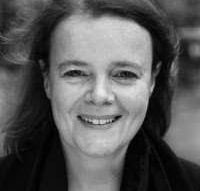Goa is abuzz with excitement as vintage bike and car owners, users, collectors and fans are decking […]

Dr Eva Griffith: A Childhood Brushed by Stardom
Uncategorized November 21, 2025By A Special Correspondent
Eva Griffith was born in 1963 into a household that was already half-attuned to the stage. Her father, the acclaimed Welsh filmmaker Kenneth Griffith, was a man of ferocious intelligence and sharp political instincts. Her mother, Doria Noar, was an actor. The stage was a familiar presence in young Eva’s life, but it was her role at age nine that would place her in the orbit of two of Hollywood’s brightest, most volatile stars.
In Divorce His, Divorce Hers—a made-for-television two-part film—Eva played the child whose existence attempts to bind together a crumbling marriage, mirroring the real-life turbulence between Burton and Taylor. The emotional complexity of the script required a child with unusual steadiness. Eva delivered it.
Those who witnessed the shoot recall Burton’s fondness for her. He was famously intimidating on set—his eyes cold, voice thunderous, mood mercurial. But with the young actress, he was unexpectedly gentle. Taylor, too, warmed to her, offering little gifts and moments of affection in an otherwise tense production environment.
For Eva, these were fragments of memory—but they lodged deep. Though she left acting soon afterwards, the experience remained part of her personal mythology. At an age when most children learn multiplication tables, she learned to navigate movie cameras, temperamental actors, and the delicate dance between performance and reality.
The Vanishing and the Return
After Divorce His, Divorce Hers, Eva Griffith stepped away from acting. The decision was not dramatic; it was simply life pulling her in other directions. Unlike many child actors, she neither chased nor resented the industry. The camera receded. School, books, and ordinary life took its place. But stories have a way of looping back.
In her twenties, Eva began gravitating toward theatre—this time not from the front of the stage but from backstage, into the archives, the forgotten streets of London, the dusty ledgers of lost theatres. Without A-levels, she applied to university, began again, and climbed steadily through a BA, an MA, and ultimately a PhD—an intellectual arc as surprising as any character she once performed.
Her research focused on the Red Bull Theatre, one of the roughest, rowdiest playhouses of early 17th-century London. This was not the elegant Globe of Shakespeare; it was theatre for the working classes—boisterous, loud, filled with pickpockets, cheap ale, and a vibrant cross-section of city life.
To study it required archival detective work. Eva threw herself into it with unusual passion.
Rebuilding a Lost Stage
Her landmark book, A Jacobean Company and its Playhouse: The Queen’s Servants at the Red Bull Theatre (c. 1605–1619), published by Cambridge University Press, resurrected a whole theatrical world that had languished in obscurity. Through painstaking reconstruction of property records, legal disputes, play texts, and court documents, she breathed life into forgotten actors, managers, and audiences.
The academic community took notice. Scholars of Shakespeare and Renaissance theatre frequently cite her as an authority on the early modern stage beyond the canonical Globe—an area long underexplored. Directors staging Jacobean plays consult her research. Students discover, through her work, that the theatre was not just kings, poets, and soliloquies—it was also sweat, chaos, laughter, and the energy of ordinary people.
In many ways, Eva has become to the Red Bull Theatre what Burton became to Shakespeare on screen: a compelling interpreter who brings an ancient world into the present.
Full Circle: The Burton Film
This year, during the celebrations of Richard Burton’s 100th birth anniversary, Eva found herself returning not to the stage but to the past—her own past, and Burton’s.
She has just completed a new animated short film recalling her childhood memories of working with Burton. It is not biographical in the conventional sense. Instead, it is intimate, impressionistic, filtered through the eyes of a nine-year-old and the understanding of the scholar she later became.
In the film, Burton is not the volcanic celebrity of tabloid myth but the tired, kind, extraordinarily human man she remembered. The film quietly adds something missing from many larger centenary tributes: a child’s perspective on a giant.
In the cacophony of Burton retrospectives—documentaries, dramatic films, re-screenings—Eva’s piece stands out because it is small, precise, deeply felt. It captures the paradox of Burton better than many grand narratives: the man who roared like a lion on screen but had the gentlest interactions with a young co-star.















